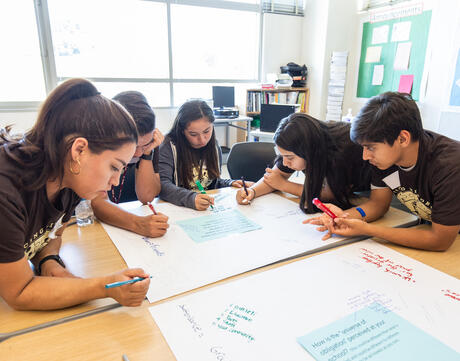
What Does It Mean to Come of Age? | Introductory Lesson
At a Glance
Language
English — USSubject
- English & Language Arts
Grade
6–12Duration
One 50-min class period- Culture & Identity
Overview
About This Lesson
Adolescence is a dynamic time of growth, change, and possibility, a time when young people explore their identities, seek new experiences and relationships, and form values that will shape their futures. Before teaching a text set from the Coming of Age in a Complex World collection, it can be beneficial to give students an opportunity to explore the concept of “coming of age” with their peers. This exploration, which includes guided personal reflection and a collaborative activity to define coming of age, can lead to rich discussions about what it means to experience adolescence, what expectations adults hold for young people on the cusp of adulthood, and what unique challenges and opportunities the current generations of students face now and will face in the future.
Preparing to Teach
A Note to Teachers
Before teaching this lesson, please review the following information to help guide your preparation process.
Activities
Activity 1
Materials and Downloads
Quick Downloads
Download the Files
Get Files Via Google
What Does It Mean to Come of Age? | Introductory Lesson
Additional Resources
Unlimited Access to Learning. More Added Every Month.
Facing History & Ourselves is designed for educators who want to help students explore identity, think critically, grow emotionally, act ethically, and participate in civic life. It’s hard work, so we’ve developed some go-to professional learning opportunities to help you along the way.
Exploring ELA Text Selection with Julia Torres
On-Demand

Working for Justice, Equity and Civic Agency in Our Schools: A Conversation with Clint Smith
On-Demand

Centering Student Voices to Build Community and Agency
On-Demand













